Model railroad layout signaling is just as complicated as real railroad signaling.
This is an example of how signaling might work on a small oval layout. Once you understand how the signals work together in a simple setting, you will be better equipped to tackle signaling on your layout.
The layout is a simple oval with a passing siding.
Here are the locations of the individual signals:
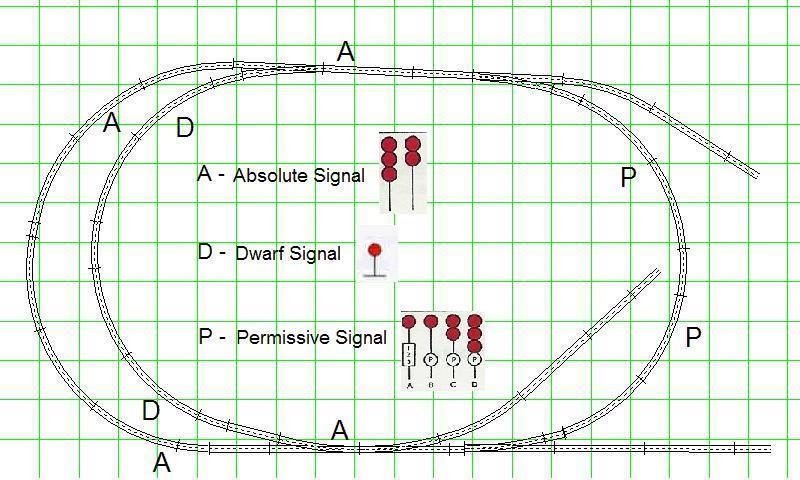
This railroad has four Absolute signals, two Dwarf signals and two Permissive signals.
The four Absolute signals and two Dwarf signals protect not only the main line & the passing track but also the two turnouts and the signal circuits which are beyond the signal. The indications given by these color light signals vary based upon the position of the turnout, whether the next signal circuit is occupied and upon the indication of the next signal.
Note that typical practice has each signal located to the right side of the track which the signal governs. There are exceptions to this rule, as there are with many railroad signaling practices.
The signal indication examples given here are for a train at the bottom of the track layout diagram, moving from right to left (note the large arrow). The Permissive signals are not included for clarity.
Stop:
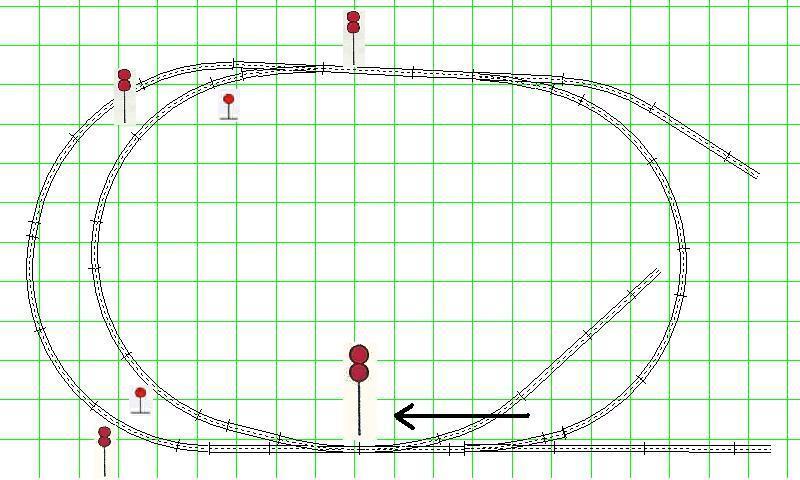
In this first example, all signals are set to "Stop". Any train moving on the layout will continue until it reaches a red signal, when it would stop. Because both the Absolute and Dwarf signals are "Stop & Stay", the trains will stop until a signal indicates otherwise.
Approach: In this example, the train is approaching and will stay on the main line. The turnout is lined for the mainline and the following signal indicates "Stop".
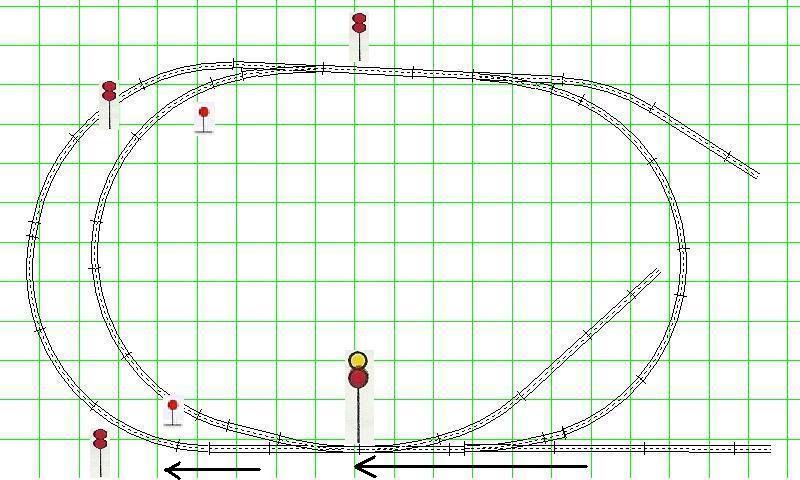
As the train passes the "Approach" signal, it changes to red, protecting this train from any following trains.
Clear: If the next signal is set to "Approach", then the first signal will indicate Clear (Proceed) to the approaching train:
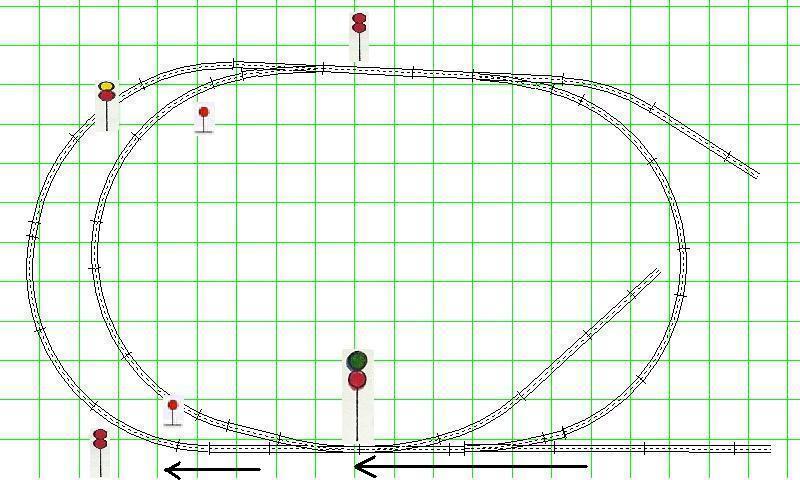
Restricting: If there is another train or car in either the main or passing siding and our moving train is routed into that signal circuit, in many cases this train will be given a Restricting indication.
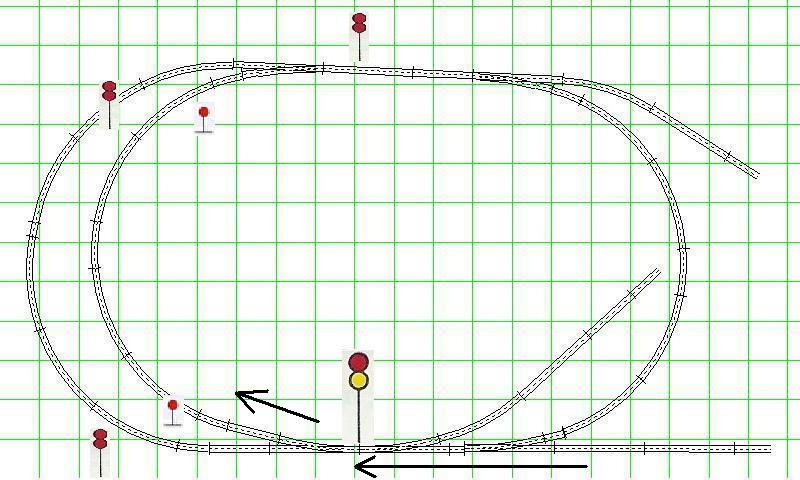
There are variations on the restricting signal; frequently a white light, called a Lunar indication, is used. In other circumstances, the signal remains red and a letter "W" or "S" is illuminated, indicating to the crew that it will be entering an occupied circuit.